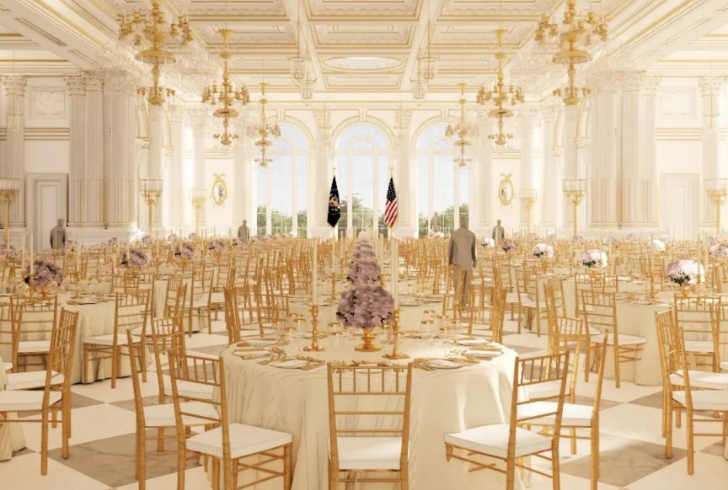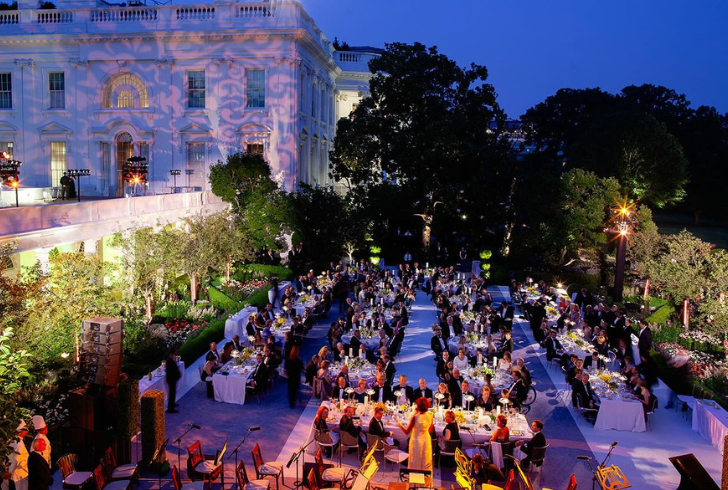Why Trump Wants a 90,000-Sq-Ft Ballroom in the White House
Construction on a grand new White House ballroom—funded by Donald Trump and unnamed private donors—is scheduled to begin this September. This striking $200 million expansion will add a dedicated venue to host larger events on the grounds, marking one of the most ambitious changes to the White House in recent years.
A Look Inside the Ballroom Plans
Planned for the South Lawn, the new ballroom would span an impressive 90,000 square feet and host as many as 650 guests—far beyond the East Room’s usual capacity of about 450. Trump, never shy about grand scale, has often voiced frustration over the White House’s shortage of a truly fitting space for formal events.
With construction set to wrap up before the end of Trump’s current term in 2029, this new addition is being described by officials as both structurally independent from the main building and architecturally cohesive with the original design.
Key Features of the New Space

Instagram | middayindia | The interior features neoclassical White House details, white and gold accents, and large windows.
1. Design – The interiors will feature white and gold accents, expansive windows for natural light, and detailing that mirrors the neoclassical architecture of the White House.
2. Capacity – Space for up to 650 guests, making it the largest event room within the White House complex.
3. Location – Constructed on the South Lawn, positioned apart from the main structure but visually in sync with its historical style.
The project won’t change the West Wing or the main residence. However, it will upgrade the East Wing, originally added in 1902 and expanded in 1942. During the ballroom construction, staff currently working in the East Wing—especially aides to First Lady Melania Trump—will temporarily move to other locations.
Who’s Behind the Project?
While Trump has publicly stated he’ll fund the construction through his own finances and private contributions, the identities of other donors haven’t been disclosed. White House Press Secretary Karoline Leavitt confirmed that the project would not draw on taxpayer money.
During the press briefing on July 31, Leavitt shared renderings that gave a first look at the planned interiors, featuring gold embellishments and a layout designed to optimize event flow.
The Team Leading the Construction
Clark Construction has been tapped as the project’s general contractor, with Washington-based McCrery Architects overseeing the design. According to Chief of Staff Susie Wiles, there’s a strong emphasis on respecting the historic character of the White House while introducing a contemporary event space that could serve both current and future administrations.
This isn’t the first time Trump has reshaped the executive mansion. His past upgrades have included:
1. Redesigning the Rose Garden with stonework
2. Adding gold embroidery throughout the Oval Office
3. Installing two 88-foot flagpoles on both lawns
Each change reflects his personal taste and desire to leave a visible mark on the historic property.
What This Means for the White House

Instagram | petesouza | Unlike past wings, the new White House ballroom is a massive, privately funded project.
Although White House expansions are rare, they’re not unprecedented. The East Wing and West Wing were both later additions to the original 1800s structure. What sets this ballroom project apart is the scale, style, and private funding model.
There’s also a broader strategy at play. With large gatherings increasingly common in today’s political climate, a dedicated space makes sense logistically. Rather than retrofitting rooms meant for smaller functions, the White House will soon have a space purpose-built for hosting formal dinners, international summits, and ceremonial events.
A New Era for White House Events
Trump’s plan for an independent ballroom on the White House grounds signals ambition on a grand scale. Carrying a $200 million budget, the design promises to blend the building’s traditional charm with new utility. Beyond aesthetics, it represents a structural move that might alter the way the property serves future presidents.
As work progresses, attention will be fixed on whether the new ballroom becomes a lasting hub for state events or a defining feature of Trump’s return. Either way, it’s poised to be one of the most significant updates ever made to the residence at 1600 Pennsylvania Avenue.